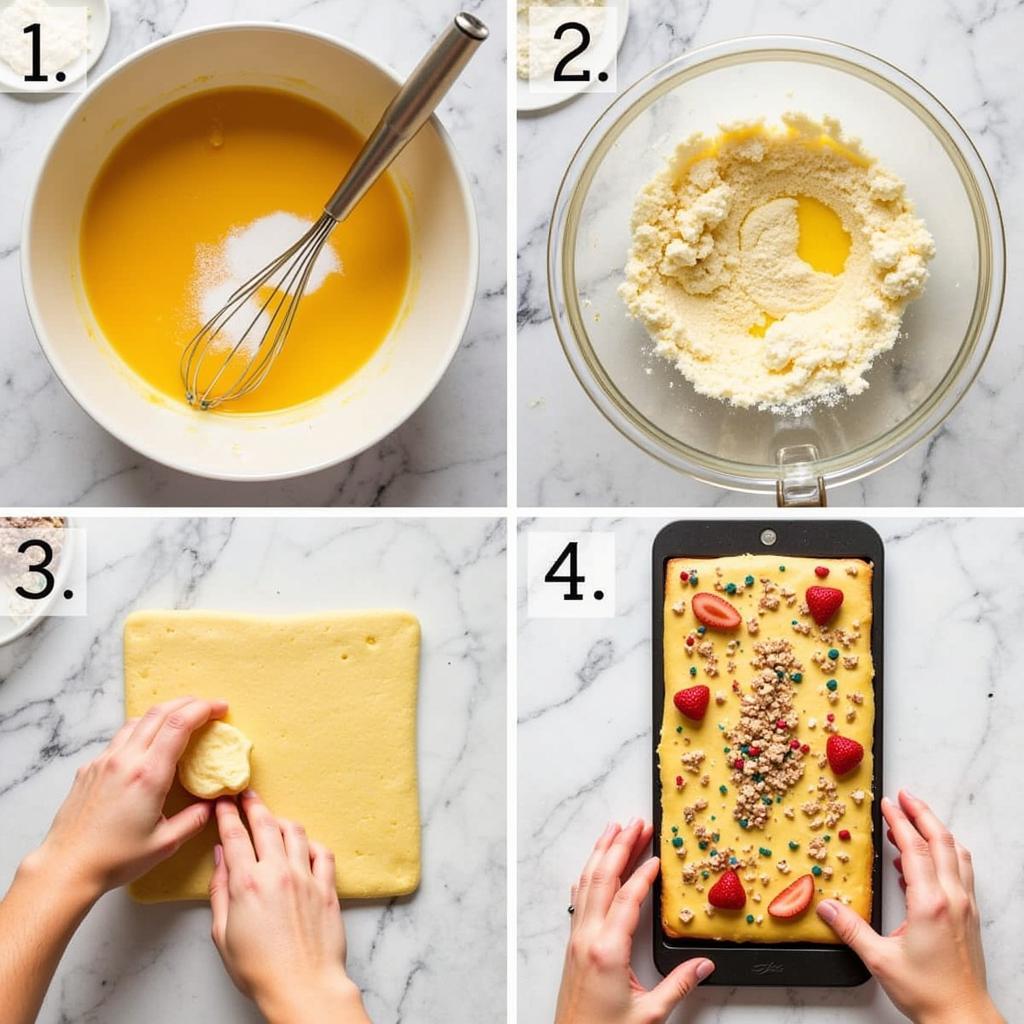Buche Food, also known as a Yule log, is a traditional dessert served during the Christmas season, especially in France, Belgium, Switzerland, and Quebec, Canada. This delectable treat isn’t just a dessert; it’s a culinary symbol of Christmas cheer and a centerpiece of festive celebrations. But what exactly is buche food, and what makes it so special? Let’s dive into the fascinating world of this festive delight.
What is Buche Food and Why is it Called That?
Buche food gets its name from its resemblance to a Yule log, “buche” being the French word for “log.” Traditionally, families would burn a large log in their fireplace on Christmas Eve, symbolizing good fortune for the coming year. As fireplaces became less common, the tradition evolved into this edible representation. This culinary masterpiece is essentially a rolled sponge cake, often flavored with chocolate or coffee, and filled with rich buttercream, mousse, or ganache.
The cake is then frosted to resemble bark, often using chocolate ganache and textured patterns created with a fork. Decorations such as meringue mushrooms, marzipan holly leaves, and edible glitter add to the festive charm, transforming the cake into a miniature edible Yule log.
A History Steeped in Tradition: Exploring the Origins of Buche Food
The origins of buche food are shrouded in some mystery, with several theories surrounding its creation. One theory links it to the ancient Celtic tradition of burning a Yule log during the winter solstice. Another suggests it evolved from medieval bakers who would make special, elongated loaves of bread for Christmas. Regardless of its precise origins, the modern buche de Noel, as it’s known in French, took shape in the 19th century, becoming a staple of French Christmas celebrations.
 A step-by-step guide on how to make a traditional Buche de Noel cake.
A step-by-step guide on how to make a traditional Buche de Noel cake.
Crafting Your Own Buche de Noel Masterpiece: Tips and Tricks
Making a buche food can seem daunting, but with the right techniques, it’s an achievable and rewarding culinary adventure. The key is to create a light and airy sponge cake that can be rolled without cracking. A gentle hand and a clean tea towel are essential for rolling the cake while it’s still warm. The filling should be smooth and spreadable, allowing for an even layer within the rolled cake. Finally, the frosting should be thick enough to create the bark-like texture, while the decorations add the finishing touch of festive magic.
Buche Food Variations: A World of Flavors and Creativity
While the traditional chocolate buche de Noel remains a classic, there’s ample room for creativity. From coffee and hazelnut to pistachio and raspberry, the flavor combinations are endless. You can also experiment with different fillings, such as fruit curd, whipped cream, or even ice cream. The decorations can be as simple or elaborate as you desire, allowing you to personalize your buche food and make it a truly unique centerpiece for your Christmas table.
“The beauty of buche food lies in its versatility,” says renowned pastry chef, Marie Dubois. “It’s a blank canvas for culinary expression, allowing you to blend traditional techniques with modern flavors and create a dessert that is both visually stunning and deliciously satisfying.”
Conclusion: A Festive Feast for the Senses
Buche food, more than just a dessert, is a symbol of Christmas tradition and culinary artistry. From its humble beginnings as a Yule log to its modern-day incarnation as a delectable rolled cake, it embodies the spirit of the festive season. So, this Christmas, why not embrace this delightful tradition and create your own buche food masterpiece? It’s a guaranteed way to impress your guests and add a touch of magic to your Christmas celebration. Check out our articles on french new year food and french new year’s food for more festive culinary inspiration!
FAQ
- What is buche food made of? A traditional buche de Noel is made of a rolled sponge cake filled with buttercream, mousse, or ganache, and frosted to resemble a log.
- Where does buche food come from? It originates from France and is associated with Christmas celebrations.
- Can I make buche food at home? Yes, there are many recipes available online and in cookbooks.
- What are some common buche food flavors? Chocolate, coffee, hazelnut, and vanilla are popular choices.
- When is buche food traditionally eaten? It is typically served as a dessert on Christmas Eve or Christmas Day.
- What does “buche” mean? “Buche” is the French word for “log.”
- What are some alternative fillings for buche food? Fruit curd, whipped cream, and ice cream are some alternatives.
For further assistance, please contact us at Phone Number: 02437655121, Email: [email protected] or visit us at 3PGH+8R9, ĐT70A, thôn Trung, Bắc Từ Liêm, Hà Nội, Việt Nam. We have a 24/7 customer support team.